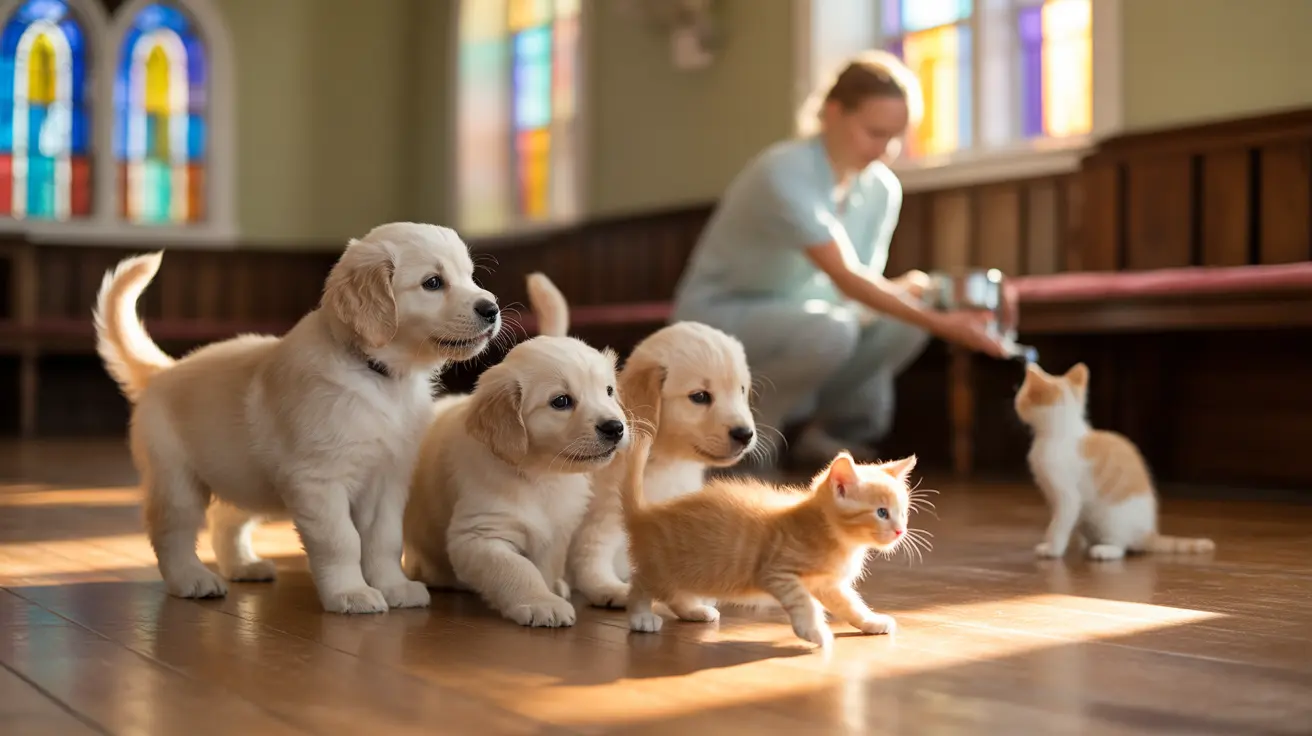In a heartwarming display of community innovation, a former Zion Lutheran Church has found new purpose as a dedicated space for animal fostering, demonstrating how repurposed church buildings can serve animal welfare needs. Kathy Johnson, alongside her husband, has pioneered this unique approach to animal care, creating a sanctuary where puppies and kittens receive temporary homes while awaiting permanent placement.
This innovative use of sacred space showcases how adaptive reuse of church buildings can benefit animal welfare initiatives. The former church now serves as both a fostering facility and a crucial transfer point for animals heading to Nebraska Wildlife Rehab in Omaha, creating a vital link in the local animal welfare network.
Transforming Sacred Spaces into Animal Sanctuaries
The conversion of the former Zion Lutheran Church into an animal fostering center represents a creative solution to two community challenges: the need for suitable animal care facilities and the repurposing of vacant religious buildings. The spacious interior and existing infrastructure make it particularly well-suited for animal care operations.
Benefits of Church-Based Animal Fostering
- Large, open spaces that can be sectioned for different animal needs
- Existing utilities and climate control systems
- Separate areas for quarantine and socialization
- Easy-to-clean surfaces and good ventilation
Partnership with Nebraska Wildlife Rehab
A key component of this initiative is the partnership with Nebraska Wildlife Rehab in Omaha. This collaboration ensures that animals receive comprehensive care and have access to professional rehabilitation services when needed. The facility serves as an important waypoint in the journey of rescued animals toward permanent homes.
Community Impact and Support
The transformation of this church building into an animal fostering center has created new opportunities for community involvement in animal welfare. The facility's central location and accessibility make it easier for volunteers to participate and for potential adopters to visit.
Frequently Asked Questions
How can a former church building be safely converted for animal fostering?
The conversion process requires proper sanitization, installation of appropriate flooring, and creation of separate spaces for different animal needs. The building's existing ventilation system and spacious layout naturally accommodate these modifications while maintaining a safe environment for both animals and caregivers.
What are the benefits of church-based fostering compared to home-based fostering?
Church buildings offer larger spaces, better separation between animals, and dedicated areas for different activities. The institutional setting also makes it easier to maintain consistent care schedules and accommodate multiple volunteers, while keeping foster activities separate from personal living spaces.
How can community members support this type of animal fostering program?
Community members can contribute through volunteer work, donations of supplies, and spreading awareness about the facility's mission. The building's community-centered location makes it convenient for regular volunteer participation and foster animal socialization activities.
Looking Forward
This innovative approach to animal fostering demonstrates how communities can reimagine existing spaces to serve modern needs. By combining the structural advantages of church buildings with dedicated animal care, these initiatives create sustainable solutions for animal welfare while preserving historic structures.
The success of this program could serve as a model for other communities seeking creative solutions for animal fostering and rescue operations. As more religious buildings become available for repurposing, similar initiatives could provide much-needed spaces for animal welfare organizations across the country.






